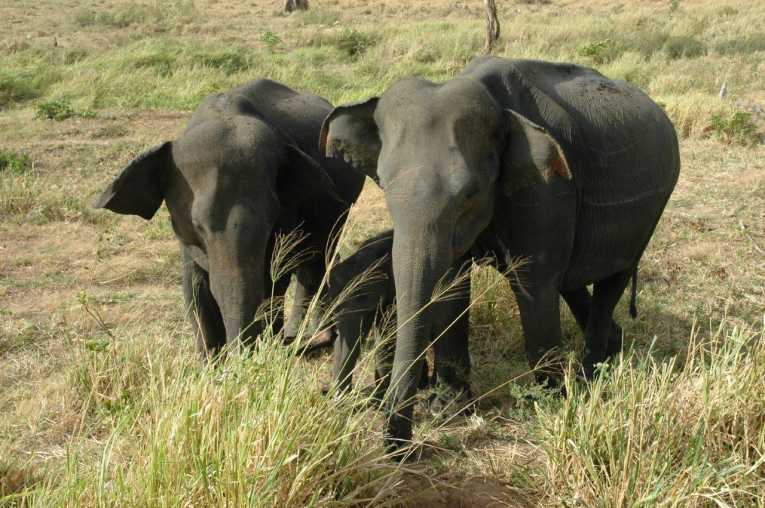Elephants have evolved a novel strategy for regulating body temperature, which allows them to endure soaring temperatures during the day without succumbing to heat stress.
Scientists at the University of Veterinary Medicine, Vienna's Research Institute of Wildlife Ecology studied Asian elephants (Elephas maximus) to determine the mechanism the mighty mammals use to withstand high daytime temperatures, which may reach 30-35 degrees Celsius (90-95 degrees Fahrenheit) in their native habitats.
The scientists fed small thermal telemetry devices to Asian elephants living in captivity in Thailand, and in a German zoo, and monitored the animals' internal temperatures for changes throughout the day and night.
Elephants don't sweat like humans, or pant like dogs to eliminate excess heat, so scientists suspected they might employ a third cooling mechanism, used by desert mammals such as camels. Called heterothermy, the internal temperature-regulation strategy essentially involves storing heat throughout the day and gradually losing it during the cool of the night.
And that's exactly what their high-tech gut-surfing sensors revealed. At night, the elephants significantly cooled down, dumping excess heat built up during the day. As expected, elephants in Thailand, where daytime temperatures peaked near triple digits (Fahrenheit), exhibited significant heat loss at night. The elephants living in Germany's more temperate climate exhibited less-dramatic temperature swings.
The findings suggest that this method of internal temperature regulation may be much more widespread among mammals than previously thought. Animal physiology expert and co-author of the study, Thomas Ruf, expressed excitement over the discovery.
"The phenomenon of heterothermy as a thermoregulatory mechanism was known from desert animals such as camels, antelopes and small desert rodents, but it was surprising to find it in non-desert mammals. Our findings raise the intriguing possibility that heterothermy may be far more widespread in mammals than previously assumed."
Top Image Credit: Asian elephants © Harald Schwammer










